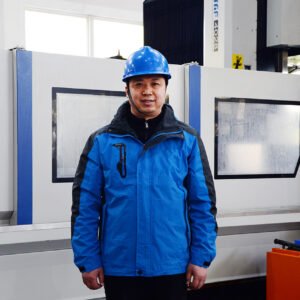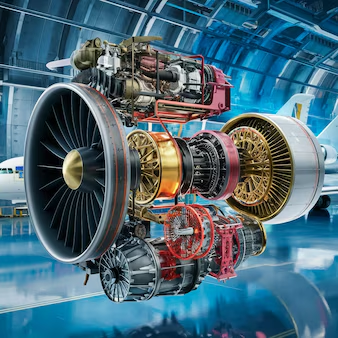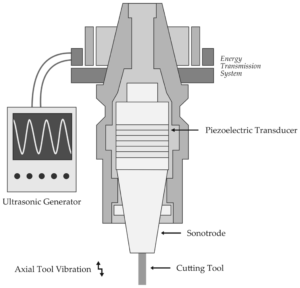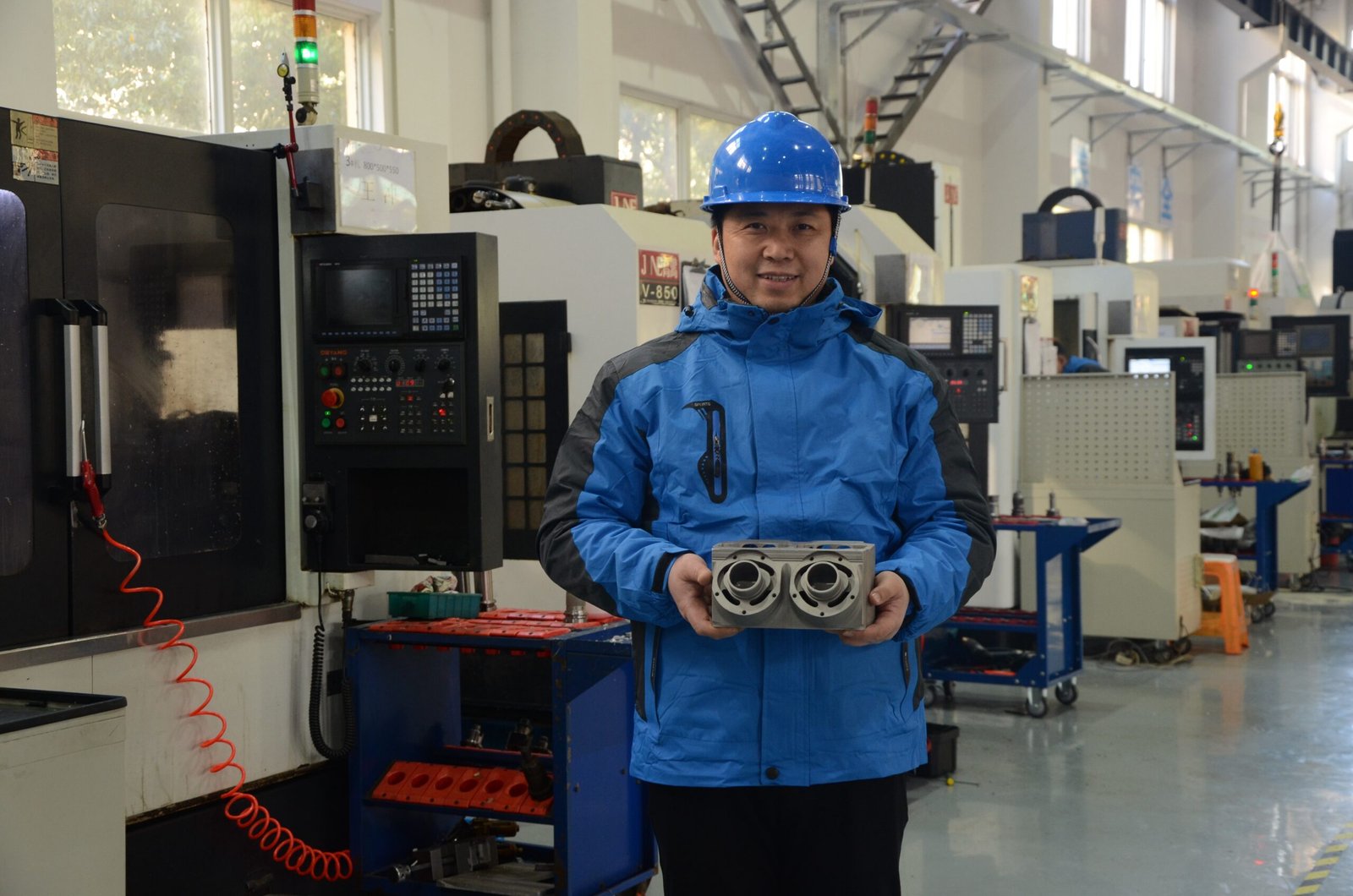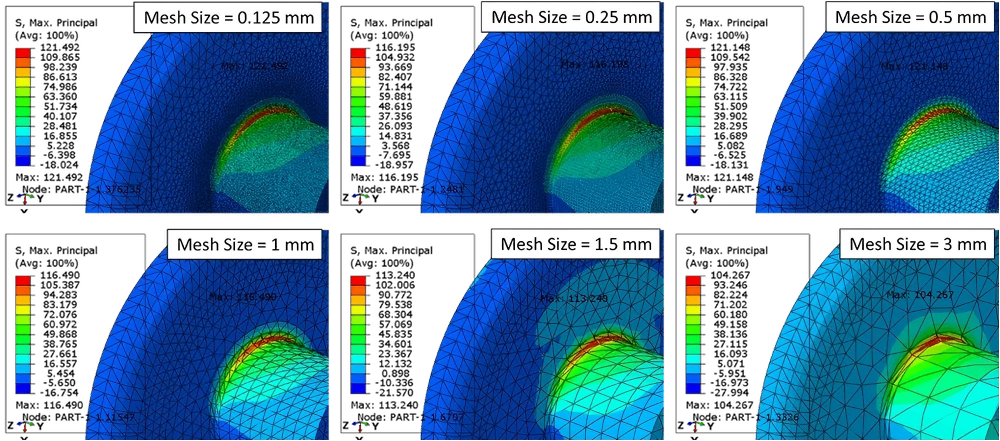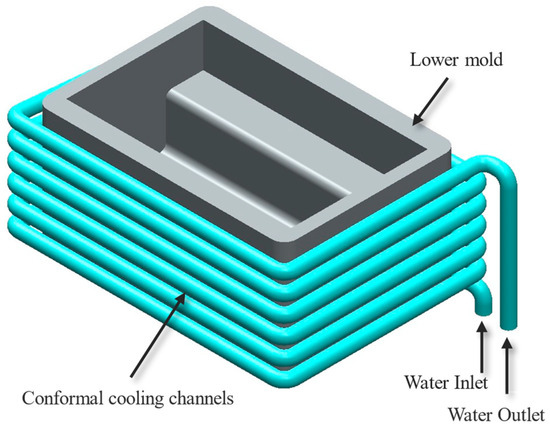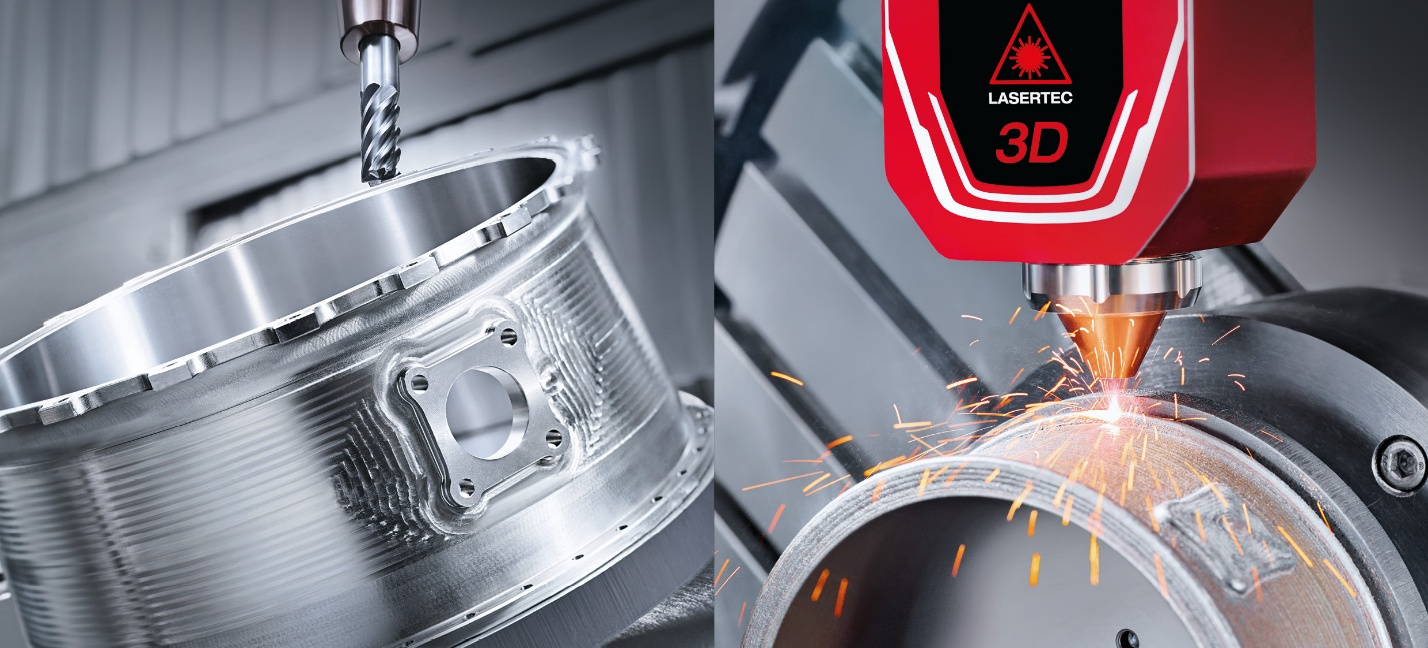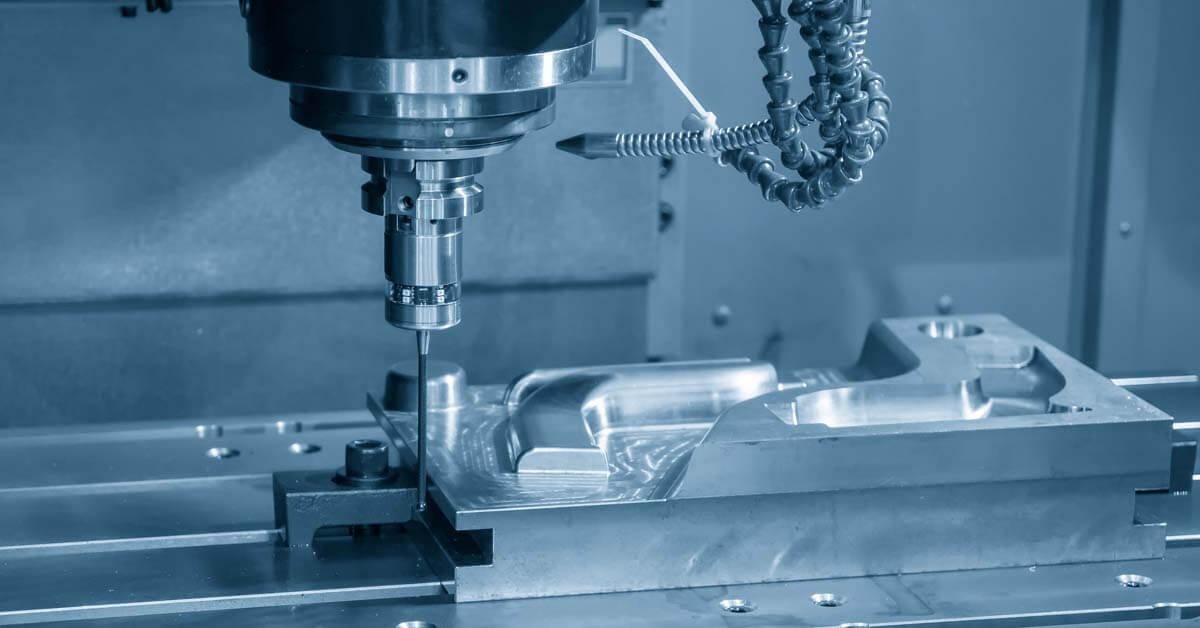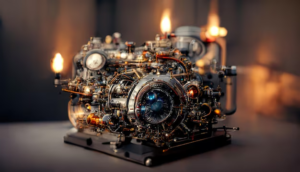
Ever wonder how modern engines attain such remarkable levels of accuracy, dependability, and performance? How can producers reliably produce complex engine parts that work flawlessly under extreme loads? Precision and efficiency are essential in the fast-paced fields of engineering and production, particularly in high-performance engine design.
Modern engines, which power everything from automobiles to aerospace wonders, require a complex balancing act between precision, efficiency, and longevity. This is where the revolutionary technology known as CNC (Computer Numerical Control) machining comes into play.
The cornerstone of modern engine design is CNC machining, which provides unmatched accuracy, repeatability, and personalization. It turns complicated engine parts, such as camshafts, cylinders, and pistons, from raw materials into perfect, high-tolerance pieces. These devices do more than simply shape metal; they transform our understanding of design possibilities and guarantee that each engine component satisfies the exacting requirements of modern industries.
However, what exactly makes CNC machining so crucial for engine production? We'll learn why engine manufacture now relies heavily on CNC machining. Let's examine how this innovative technology fosters creativity, minimizes waste, and guarantees superior performance in the engines that propel our contemporary society. So, explore this innovative technology's groundbreaking implications.
1. Significance of CNC Machining in Engine Manufacturing
CNC (Computer Numerical Control) machining has emerged as a key component of contemporary engine production, fostering precision and innovation in manners that conventional techniques cannot. It is important because it can satisfy the high standards of engine economy, performance, and dependability while allowing manufacturers to push the limits of production and design.
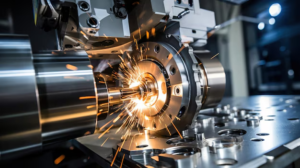
1. Accuracy and Compassion
Engines are intricate systems with parts that need to function flawlessly in harsh circumstances. CNC machining ensures that every element fits into the assembly smoothly and functions effectively by providing the precision needed to achieve tight tolerances. To maximize engine performance and reduce wear and tear, this degree of accuracy is essential.
2. Consistency in Large-Scale Manufacturing
The capacity of CNC machining to repeat components with consistent quality, irrespective of production volume, is one of its most important benefits. Because reliability is crucial in sectors like automotive and aerospace, this repeatability guarantees that every engine built satisfies the same high criteria.
3. Complexity and Innovation in Design
Intricate parts intended to maximize economy and performance are frequently found in modern engines. These intricate geometries are supported by CNC machining, enabling engineers to realize their ambitious concepts. Improvements like lighter components, increased fuel efficiency, and lower pollutants are made possible by this capacity.
4. Versatility of Materials
A wide range of materials, from lightweight aluminum alloys to high-strength steel and titanium, are used to make engine components. These materials can be used with CNC machines, giving manufacturers the freedom to select the ideal material for a given application without sacrificing machining quality.
5. Economy and Waste Minimization
Through accurate cutting and machining procedures, CNC machining lowers material waste, which results in financial savings. Its automation also reduces human mistakes, which further cuts waste and boosts productivity.
6. Rapidity and Expandability
Rapid prototyping and faster transitions to mass production are made possible by CNC machining, which speeds up the production process. In sectors that require constant innovation and have strict deadlines, this speed is crucial.
7. Improved Surface Treatments
The surface condition of engine parts frequently affects their longevity and performance. Smooth finishes that lower friction, increase functionality, and lengthen the life of engine parts are guaranteed by CNC machining.
8. Global consistency
Manufacturers may ensure consistent quality and streamline international operations by standardizing manufacturing processes across several locations with CNC machining. For enterprises with global supply chains, this stability is especially beneficial.
2. Key Engine Components Machined Using CNC
CNC machining is indispensable for producing a variety of engine parts with the accuracy and robustness required for optimum performance. The following are the main engine parts that CNC technology is frequently used to machine:
1. Cylinder Head
The cylinder heads are essential for housing the spark plugs, intake and exhaust valves, and combustion chambers. CNC machining guarantees that the complex fuel and air channels are perfectly formed for better engine performance and efficient combustion.
2. Pistons
The engine's pistons are exposed to high pressure and heat. To reduce friction, increase power transfer, and preserve durability over time, CNC machining offers the precise tolerances and smooth finishes needed.
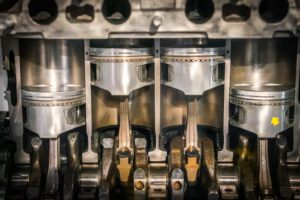
3. Crankshaft
To generate engine power, the crankshaft transforms the linear action of the pistons into a rotating motion. The intricate geometries of crankshafts are precisely shaped by CNC machining, guaranteeing optimal balancing and effective operation.
4. Camshaft
Engine valves are controlled by camshafts, which synchronize their movement with the piston cycle. The exact profiles required for ideal valve operation and overall engine performance are produced via CNC machining.
5. Engine Blocks
The engine block, which houses vital parts including cylinders and oil passageways, is the cornerstone of any engine. CNC machining guarantees that the block is precisely surfaced and drilled to fit all other parts, creating a sturdy and dependable foundation.
6. Connecting Rods
Connecting rods transmit the force produced by combustion and connect the pistons to the crankshaft. They can sustain enormous strains and continue to function because CNC machining ensures their strength and accuracy.
7. Valve and Seat Guides
These elements guarantee that the valves are properly aligned and sealed. The smooth finishes and precise tolerances required for effective airflow and reduced leakage are produced by CNC machining.
8. Flywheels
To ensure steady engine operation, flywheels store rotational energy. Their correct weight distribution and balance are guaranteed by CNC machining, which is essential for lowering vibrations and increasing effectiveness.
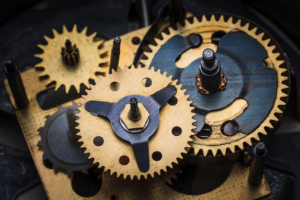
9. Turbocharger Parts:
Turbochargers compress intake air to increase engine power. The precise manufacturing of complex blades, housings, and other parts needed for high-speed operation is accomplished using CNC machining.
10. Water and Oil Pumps
Important engine operations like cooling and lubrication are controlled by these pumps. Accurate measurements and smooth surfaces required for longevity and efficient fluid flow are assured by CNC machining.
3. CNC Machining Techniques for Engine Components
Several methods are used in CNC machining to create engine parts with extreme efficiency and accuracy. Every technique is customized to fulfill the unique needs of the component being produced, guaranteeing precise tolerances, intricate geometries, and excellent finishes. The most widely used CNC machining methods in engine manufacture are listed below:
1. The CNC Milling
In engine parts like cylinder heads, engine blocks, and valve seats, CNC milling is frequently utilized to produce intricate details and complex forms. The method allows for the precise machining of complex designs by removing material from the workpiece using spinning cutting tools.
2. Finishing and Polishing
The surface quality of parts like valve seats and pistons is enhanced by CNC polishing methods, such as CNC-controlled buffing and grinding. This ensures peak performance, lowers friction, and increases their durability.
3. Honing and Boring
Meanwhile, honing ensures the accuracy and smoothness of cylindrical surfaces, like cylinder bores, and boring enlarges preexisting holes. These methods are crucial to getting the correct fit and finish needed for engine performance.
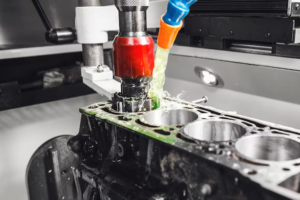
4. Thread Mill
An accurate technique for producing internal or exterior threads in engine parts such as bolts, nuts, and threaded holes is thread milling. In contrast to tapping, thread milling permits thread size modification and lowers the chance of tool damage.
5. Deep Drilling Holes
This method is employed to make tiny, deep holes, like cooling channels in engine blocks or oil routes in crankshafts. Straightness, accuracy, and a constant diameter throughout the depth are guaranteed by CNC-controlled deep hole drilling.
6. Countersinking and Counterboring
Whereas countersinking produces a tapered opening, counterboring enlarges the top part of a drilled hole. To ensure seamless assembly, these methods are crucial for parts that call for flush-mounted screws or recessed bolt heads.
7. The slotting
Slotting is a technique used to make slots or grooves in parts such as gear systems, crankshafts, and pistons. The precise depth and alignment that CNC slotting guarantees are essential for moving parts to work properly.
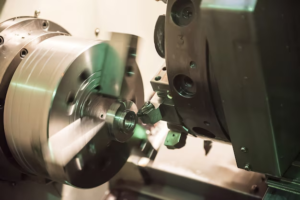
8. Shaping and Hobbing Gears
In engine timing systems, gear hobbing and shaping are specialized methods for producing gears and splines. Precision in tooth profiles and spacing is ensured by CNC control for seamless and effective power transfer.
9. CNC Waterjet Cutting
Waterjet cutting cuts through materials by using a high-pressure spray of water that has been infused with abrasive particles. Since thermal distortion is avoided, this method works well for complex shapes in heat-sensitive materials.
10. Plasma Cutting
A high-energy plasma jet is used in plasma cutting to cut electrically conductive materials, such as steel and aluminum. Before final precision machining, it is frequently used to rough-cut engine components.
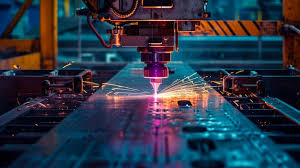
11. Hard Turning
Hard turning is the process of using single-point cutting tools to mill hardened materials (over 45 HRC). It provides a similar level of accuracy to grinding and is frequently used to finish items like crankshafts and camshafts.
12. Isotropic Superfinishing (ISF)
Isotropic Superfinishing is an advanced finishing technique that polishes the surfaces of parts including crankshafts, camshafts, and gears to increase longevity, lower friction, and boost performance.
13. CNC Profiles
Usually, the term "profile" describes the final part's contour, outline, or particular geometric shape. The technique of profiling involves cutting along a predefined path to create contoured surfaces. Complex engine parts like exhaust manifolds and turbine blades are commonly machined using it.
14. Wire EDM ( Electrical Discharge Machining
For cutting conductive materials with precise tolerances and complex shapes, wire EDM is perfect. It is frequently used to add tiny features to fragile engine parts or fuel injector nozzles.
15. Knurling
To increase grip or make press-fitting easier, knurling adds rough patterns to surfaces. To improve functionality, this method is applied to parts like fasteners and piston rods.
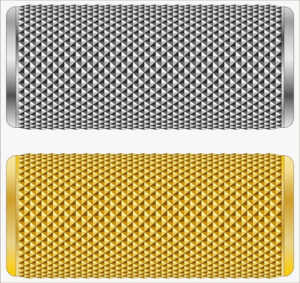
4. Materials Used in Engine Components
High temperatures, pressures, and mechanical strains are all applied to engine parts, necessitating the use of aero-engine alloys that can endure these harsh circumstances without compromising durability or performance. Based on their particular uses, the following list of materials is frequently found in engine components:
1. Aluminum alloys
- It is used in intake manifolds, cylinder heads, pistons, and engine blocks.
- Aluminum alloy is robust and lightweight, reduces engine weight overall, and increases fuel economy.
- Outstanding resistance to corrosion and disposal of heat.
- The alloys A356, 319, and 2618 are common.
2. Cast iron
- Application: is used in crankshafts, cylinder liners, and engine blocks.
- Property: Exceptional vibration damping and high wear resistance.
- Heavy-duty engines can benefit from its strength and thermal stability.
- Common types: Durable iron, compacted graphite iron (CGI), and gray cast iron are common varieties.
3. Steel and Steel Alloys
- Application: Connecting rods, valve springs, crankshafts, and camshafts.
- Superior durability and strength for mechanical stresses.
- Hardness and resilience to fatigue are improved by alloying elements such as molybdenum and chromium.
- Common Grades: It include stainless steels (for components that resist corrosion) and AISI 4140 (chromoly steel).
4. Titanium alloys:
- Applications: It is used in parts making for turbochargers, connecting rods, and valves.
- Property: high strength-to-weight ratio and superior corrosion resistance.
- Because of its resistance to high temperatures, it is perfect for high-performance engines.
- Common type: Tin-6Al-4V is a common alloy.
5. Magnesium Alloys
- Application: It is used in lightweight structural elements, oil pans, and engine covers.
- Property: It can further reduce engine weight because it is lighter than aluminum.
- Better machinability than aluminum, but poorer corrosion resistance.
- Common type: Automotive engine covers and gearbox cases frequently use AZ91D, a popular magnesium alloy with exceptional mechanical qualities and outstanding corrosion resistance.
6. Nickel-Based Superalloy
- Applications: Jet engine parts, exhaust valves, and turbocharger turbines.
- Property: Outstanding heat and corrosion resistance that maintains strength at elevated temperatures.
- Common Type: Inconel and Hastelloy are common alloys.
7. Copper Alloys
- Applications: it is mainly used in bushings and bearings.
- Property: outstanding conductivity of heat and electricity.
- high machinability and resilience to wear.
- Common types: bronze and brass are common material
8. Plastic and Composites
- Application: Intake manifolds, valve covers, and timing chain guides are examples of applications for plastics and composites.
- Property: Ideal for non-load-bearing applications, they are corrosion-resistant and lightweight.
- Common Material: Polyoxymethylene (POM), nylon, and carbon-fiber-reinforced composites are examples of common materials.
9. Ceramics:
- Application: includes bearings for turbochargers, glow plugs, and spark plug insulators.
- Property: low thermal expansion and high resilience to heat.
- Frequently seen in specialized or hot components.
- Common Type: A ceramic with remarkable durability and heat resistance, zirconia (ZrO₂) is frequently found in turbocharger bearings and oxygen sensors.
10. Silicon Carbide and Graphite
- .Applications include gaskets, seals, and lightweight parts.
- Property:
- high chemical resistance and heat conductivity.
- frequently seen in advanced designs and hybrid engine systems.
- Common Material
- Recrystallized silicon carbide: Often utilized in high-temperature applications such as turbocharger rotors, it provides exceptional thermal conductivity.
- Carbon-Graphite Composites: These materials are perfect for high-performance engine piston rings, bearings, and seals because of their low friction and great wear resistance.
Criteria for Materials Selection
The selection of engine component materials is based on some kind of properties which are mentioned below: Material property helps to choose a suitable material for the desired purpose.
- Mechanical Properties: Resistance to fatigue, strength, and toughness.
- Thermal Properties: Thermal conductivity and heat resistance.
- Machinability: Simplicity in processing and manufacturing.
- Considering weight: Fuel efficiency is increased with lighter materials.
- Corrosion Resistance: Resistance to corrosion means resilience in challenging conditions.
5. Challenges in CNC Machining of Engine Components
Although CNC machining is vital for producing accurate and dependable engine parts, there are several issues that manufacturers must resolve to ensure effectiveness and quality. The main difficulties with CNC machining engine parts are listed below:
1. Complex Geometries
● Challenge: Combustion chambers, cylinder heads, turbine blades, and other modern engine parts frequently have complex shapes and contours that call for specialized machining techniques.
● Impact: The complexity and cost of production are increased by the need for specialized equipment, multi-axis CNC machines, and skilled programming to produce these features with great accuracy.
2. Strict Surface Finishes and Tolerances
- Challenge: To ensure optimum performance, engine parts such as pistons, crankshafts, and bearings must adhere to incredibly strict tolerances (sometimes in microns) and flawless surface finishes.
- Impact: Sustaining this level of accuracy necessitates constant calibration of CNC equipment and premium cutting tools, which may result in longer tool wear and downtime.
3. Machinability and Material Hardness
- Challenge: Because of their hardness and heat characteristics, materials like titanium alloys, nickel-based superalloys, and toughened steel are used to make many engine components—are difficult to manufacture.
- Impact: Machining these materials necessitates sophisticated cutting fluids or methods to control heat and tool life, accelerating tool wear and lengthening machining time.
4. Thermal Distortion
● Challenge: High machining rates and cutting forces produce a lot of heat, which can cause components to distort, particularly when lightweight materials like magnesium alloys or aluminum are used.
● Impact: Because of the impact on dimensional accuracy, additional finishing procedures and thermal management techniques are required.
5. Tool Wear and Breakage
● Challenge: Regular tool wear or breakage from cutting complicated parts and demanding materials reduces consistency and productivity.
● Impact: Expenses and downtime are increased by routine tool replacement and monitoring.
6. Expensive Production
- Challenge: CNC machining requires a large upfront investment in sophisticated equipment, software, and trained personnel.
- Impact: When the cost per item rises for low-volume production runs, manufacturers find it difficult to strike a balance between quality and price.
7. Quality Control and Inspection
- Challenge: Coordinate measuring machines (CMMs), which are costly and time-consuming, are one example of the sophisticated metrology instruments needed to verify the accuracy and quality of complex components.
- Impact: Production schedules as a whole may be impacted by inspection delays.
10. Software and Programming Complexity
- Challenge: Proficiency in CAD/CAM software, toolpath optimization, and machine kinematics is necessary when programming CNC machines for intricate engine components.
- Impact: Programming mistakes may result in machine downtime and scrapped parts.
11. Multi-Material Machining
● Challenge: The machining of composite or hybrid materials, which have varying machinability properties, presents a multi-material machining challenge for some engine components.
● Impact: The procedure is made more difficult by varying the instruments and adjusting the cutting parameters for every material.
6. Advancements in CNC Technology for Engine Machining
The manufacturing of engine components has seen a considerable transformation due to the quick development of CNC technology, which has improved productivity, efficiency, and precision while resolving many issues. The following significant developments have transformed CNC machining for engines:
1. Multi-Axis Machining Advancement:
Complex geometries may be machined in a single setup due to modern CNC machines having five or more axes of motion.
Effect on Machining Engines:
- Minimizes the need for numerous setups, increasing precision and cutting down on cycle times.
- Makes it possible to precisely machine complex parts like intake manifolds, cylinder heads, and turbine blades.
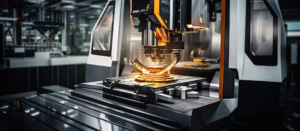 5-axis CNC Machining
5-axis CNC Machining
2. High-Speed Machining (HSM):
Improved toolpath techniques and high-speed machining spindles provide higher material removal rates without sacrificing accuracy.
Impact on Engine Machining:
- It increases the productivity of large-scale production of parts like pistons and engine blocks.
- Reduces heat production and thermal distortion in lightweight materials, such as alloys made of magnesium and aluminum.
3. Adaptive Machining:
In adaptive machining, cutting settings are dynamically adjusted by real-time monitoring systems that assess machining circumstances.
Effect on Engine Machining:
Makes up for vibrations, thermal expansion, and tool wear to guarantee constant quality.
Perfect for cutting materials that are difficult to machine, such as superalloys based on nickel and titanium.
4. Additive Hybrid Manufacturing:
Hybrid combining the capabilities of additive manufacturing (3D printing) and CNC machining.
Effect on Engine Machining:
Reduces material waste by enabling the fabrication of near-net-shaped components.
makes it possible for lightweight structures and creative designs, especially in aeronautical engines.
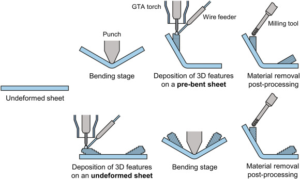
5. Automation and Robotics
Advancement: To increase production efficiency, automatic tool changers and robotic arms are used.
Effect on Engine Machining :
allows for continuous, unmanned operation, which increases production.
lowers labor expenses without sacrificing accuracy.
6. Advanced Materials and Tooling:
Cutting instruments with cutting-edge coatings such as titanium nitride (TiN), ceramic, and diamond-like carbon (DLC).
Engine Machining Impact:
- increases tool life when cutting hard materials like superalloys and steel.
- increases the dimensional accuracy and surface finish.
7. Customization with Modular CNC Systems:
Modular CNC Systems Customization: Machines built with modular configurations to meet particular manufacturing requirements.
Effect on Engine Machining:
- Makes it possible for producers to modify CNC configurations to suit certain engine designs.
- increases adaptability and makes it possible to machine a variety of engine parts effectively.
8. Micromachining Advancement:
CNC machines with specialized capabilities that can precisely and minutely manufacture features.
Impact on Engine Machining:
Used to fabricate complex features in parts such as sensors and fuel injectors.
provides sub-micron tolerances.
9. Ultrasonic-Assisted Machining:
Enables cutting by utilizing ultrasonic vibrations.
Impact on machining of engines:
- hard materials like silicon carbide and ceramics can be machined more easily by reducing cutting forces.
- improves precision and surface quality for important engine components.
7. Applications Of CNC Machining in Engine Parts
CNC machining is essential to engine manufacture in many different industries because of its unmatched accuracy, effectiveness, and versatility. It makes it possible to produce intricate parts with exact tolerances, guaranteeing peak engine performance. The main uses of CNC machining in engine manufacture are listed below:
- Cylinder Blocks and Heads: Blocks and cylinder heads are expertly crafted to provide adequate heat dissipation and combustion.
- The Camshaft and Crankshaft: form the crankshafts and camshafts to ensure precise engine timing and rotation.
- Creating complexly shaped pistons to improve combustion and lower friction.
- Parts of Turbochargers and Superchargers: Manufacturing shafts, housings, and high-precision impellers for air compression systems.
- Systems of Fuel Injection: Manufacturing sophisticated valves and nozzles for accurate fuel atomization and distribution.
- Manifolds of Exhaustion: Manifolds are shaped to maximize gas flow and minimize back pressure.
- Linking Rods: Balancing connecting rods to ensure even stress distribution.
- Engine Components for Timing and Gears: Accurate tooth profile manufacturing for timing components, sprockets, and gears.
- Parts of a Valve Train: Making retainers, lifters, seats, and guides for valves to ensure proper operation.
- Heat-Dissipating Elements: For effective thermal management, heat exchangers, oil pans, and radiators are machined.
- Custom Engine Parts and Prototypes: Enabling quick prototyping and the creation of customized parts for research and development.
- Lightweight Engine Parts: Making components out of composites, magnesium, and aluminum to increase fuel economy.
- High-Efficiency Uses: Constructing precise engine parts for the marine, aerospace, and motorsports industries.
8. Case Study: CNC Machining in the Production of Jet Engines at General Electric Aviation
Background: General Electric (GE) Aviation is one of the top producers of jet engines for industrial, military, and commercial use. The business is well known for using innovative equipment, such as CNC machining, to create parts with unparalleled durability and precision.
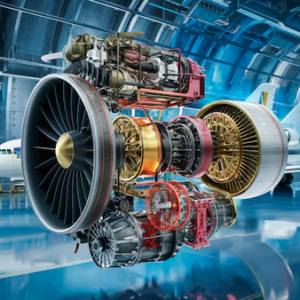
Problem: The challenge is to manufacture combustor chambers and turbine blades for jet engines that:
- withstand temperatures as high as 1,000°C.
- Preserve structural integrity when under stress and at high rotational speeds.
- Reach the intricate geometries needed for the best possible fuel economy and aerodynamics.
Conventional manufacturing techniques found it difficult to provide the accuracy and consistency needed, particularly for advanced materials like titanium alloys and nickel-based superalloys.
Solution: To address these issues, GE Aviation implemented cutting-edge multi-axis CNC machining with sophisticated software. The use of CNC technology made it possible for:
- Precise Manufacturing: Complex designs, such as cooling channels in turbine blades, could be produced with micron-level accuracy thanks to multi-axis CNC machines.
- Material Flexibility: Heat-resistant materials such as nickel superalloys and titanium aluminides were processed by CNC machines with little distortion or tool wear.
- Shorter Cycle Times: While preserving constant quality, automation and computer-controlled processes shortened production lead times.
- Integrating with Additive Manufacturing: To ensure accurate dimensions and high surface polish, 3D printed components were refined using CNC machining.
Outcome:
- Better Performance: Compared to earlier designs, the CNC-machined turbine blades' intricate cooling paths increased efficiency and cut fuel usage by 15%.
- Improved Durability: Engine life cycles were extended by components that could withstand extended exposure to high temperatures and stress.
- Adaptability: GE Aviation was able to swiftly expand manufacturing for new jet engine types such as the LEAP and GE9X because of the versatility of CNC machining.
9. Future Trends in CNC Machining for Engine Components
Advances in technology and the increasing need for accuracy, productivity, and sustainability in engine manufacture are driving a constant evolution in the field of CNC machining. Some of the major upcoming CNC trends influencing the sector are listed below:
- Integration of Artificial Intelligence and Machine Learning
To increase overall efficiency, forecast maintenance requirements, and optimize tool paths, CNC machines are incorporating AI and machine learning algorithms.
- Hybrid Manufacturing
combining additive manufacturing (3D printing) and CNC machining to increase design flexibility and decrease material waste.
- CNC Multi-Axis Machines
Expansion of CNC machines with five and six axes to create more intricate shapes with greater accuracy.
- Smart CNC Equipment
integrates IoT-capable devices for process control, remote monitoring, and easy data sharing.
- Improved Material Properties
Creation of CNC tools for cutting cutting-edge materials such as lightweight metals, high-entropy alloys, and ceramic composites.
- Nanoscale Accuracy
Next-generation engine components can now be machined with sub-micron tolerances due to emerging technologies.
- Merging Digital Twins
Before actual manufacturing, machining operations are simulated and results are predicted using digital twin technology.
- High-speed machining
improvements in high-speed spindles to shorten cycle times without sacrificing the quality of the surface finish.
Conclusion
The production of engine parts now relies heavily on CNC machining, which offers unparalleled accuracy, productivity, and scalability. From creating complex components like turbine blades and pistons to enabling creative solutions in lightweight and hybrid materials, CNC technology is pushing industry innovations.
Future developments in this industry, including hybrid manufacturing, AI integration, and sustainable machining techniques, promise to further transform it by improving performance, cutting costs, and expanding the realm of design options. With its constantly developing capabilities, CNC machining continues to be at the forefront of contemporary engineering, influencing engine manufacturing and other fields.
Does this blog clear all your thoughts about CNC machining applications for engine parts? Do you have any other queries? Let us know by commenting below.

